TYPES OF LAND IN INDONESIA
1. Volcanic Soil
a. Land Andosol
- The process of formation: from volcanic ash which has experienced weathering process
- Characteristics: gray to yellow, sensitive to erosion, and very fertile
- Utilization: as agricultural land, plantations, forests of pine or fir
- Distribution: Sumatra, Java, Bali, Lombok, Halmahera, West Nusa Tenggara and Sulawesi
b. Land Regosol
- The process of formation: from a new volcanic ash deposition has coarse grains
- Characteristics: coarse grained, gray to yellow and low organic matter content
- Utilization: for farming rice, sugarcane and coconut
- Distribution: on the slopes of volcanoes, beaches and coastal dunes which includes the islands of Sumatra, Java, Nusa Tenggara
c. Alluvial soil (soil Deposition)
- The process of formation: the land of erosion (silt and fine sand) in low-lying areas
- Characteristics: gray and sensitive to erosion
- Utilization: as agricultural land and crops rice
- Distribution: Sumatra, Java northern Halmahera, West Kalimantan, South Kalimantan, Sulawesi and Papua, the southern
2. Land Organosol
a. Humus soil
- The process of formation: from the decomposition of organic materials
- Characteristics: blackish color, easily wet, organic matter, very fertile
- Utilization: as agricultural land
- Distribution: Lampung, South-Central Java, South Kalimantan and Sulawesi Tenggara
b. Peat
- The process of formation: from the decomposition of plant / organic material in an area that is always waterlogged (swamps)
- Characteristics: is highly acidic, low nutrient so infertile
- Utilization: for agriculture tides
- Distribution: The east coast of Sumatra, Kalimantan, Sulawesi, Halmahera, Seram, Papua, South Coast
3. Land Litosol (rocky ground)
- The process of formation: from the weathering of igneous and sedimentary young (not perfect) so that large grains / rough
- Characteristics: diverse soil texture and generally sandy, not textured, color content of rocks, gravel and fertility varies
- Utilization: still reed can be used for forest
- Distribution: Central Java, East Java, Madura, East Nusa Tenggara, Maluku, Sulawesi and Sumatra
4. Land Podzol
- The process of formation: in an area with low temperatures and high rainfall
- Characteristics: pale color, high content of quartz sand, very sour, sensitive to erosion, less fertile
- Utilization: for agricultural crops
- Distribution: Central Kalimantan, North Sumatra, Papua
5. laterit
- The process of formation: Soils leached rainwater, so that nutrients have been lost seep and flow into the ground
- Characteristics: reddish brown color, infertile
- Utilization: for agricultural land
- Distribution: West Kalimantan, Lampung, Banten, Southeast Sulawesi
6. Land Mergel
- The process of formation: from the dissolution mixture of lime, sand and clay due to rain events
- Characteristics: infertile
- Utilization: for rain teak
- Distribution: Yogyakarta, South Priangan in West Java, mountains Kendeng in Central Java, Kediri, Madiun, East Nusa Tenggara
7. Land Terarosa (Kapur)
a. Land Renzina
- The process of formation: from weathering limestone in areas with high rainfall
- Characteristics: white to black, nutrient-poor
- Utilization: for crops, forest teak
- Distribution: Gunung Kidul, Yogyakarta
b. Mediterranean soil
- The process of formation: the result of hard limestone rock weathering and sediment
- Characteristics: White color brown, hard, infertile
- Utilization: agricultural fields, forests of teak
- Distribution: Mountains of East Java, Nusa Tenggara, Central Java, Sulawesi, Maluku, Sumatra
The characteristics of the soil in Indonesia:
- Contains a lot of nutrients
- Good soil structure, meaning that the composition of soil grains are not too dense and not too lenggang
- Useful contain enough water to dissolve nutrients
- Having salts in large quantities
Efforts to conserve soil resources:
- Fertilization cultivated with green manure / manure / compost
- Forests are made up on the slopes of the mountain
- Creating terassering / swale in sloping areas
- Afforestation and reforestation of denuded areas, and so on.
source
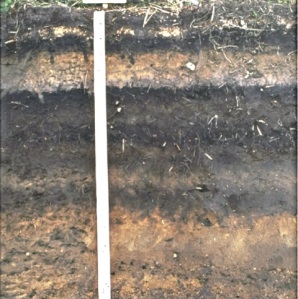

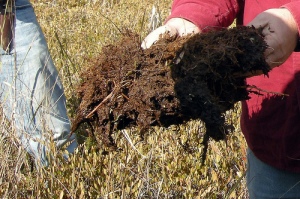
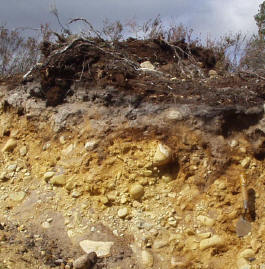
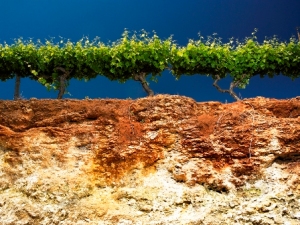
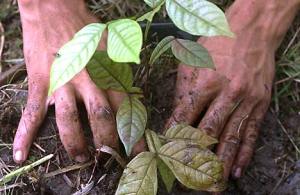
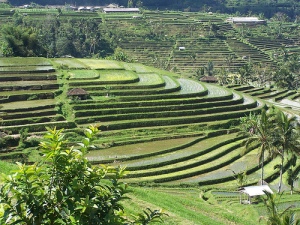











0 comments:
Post a Comment